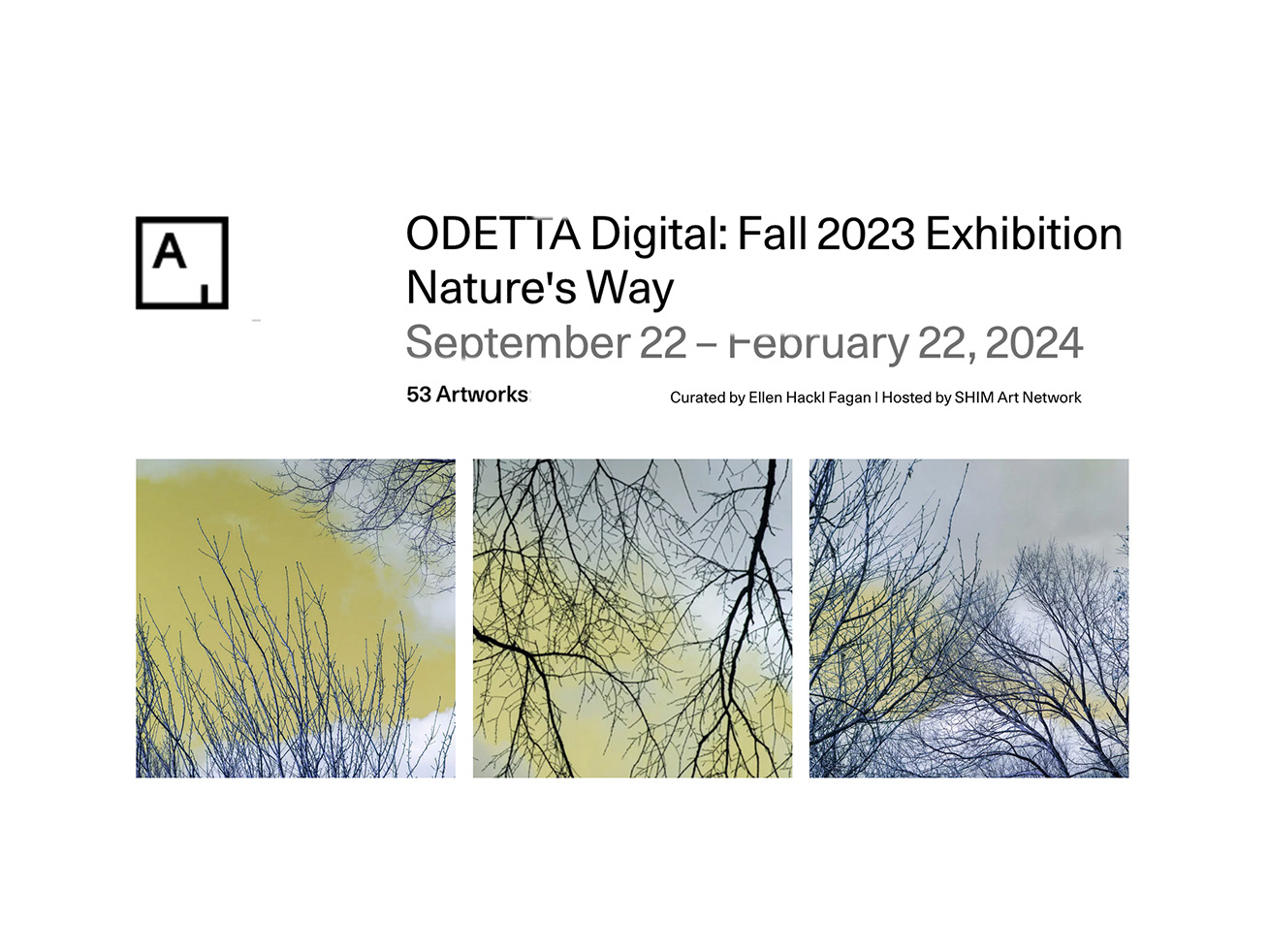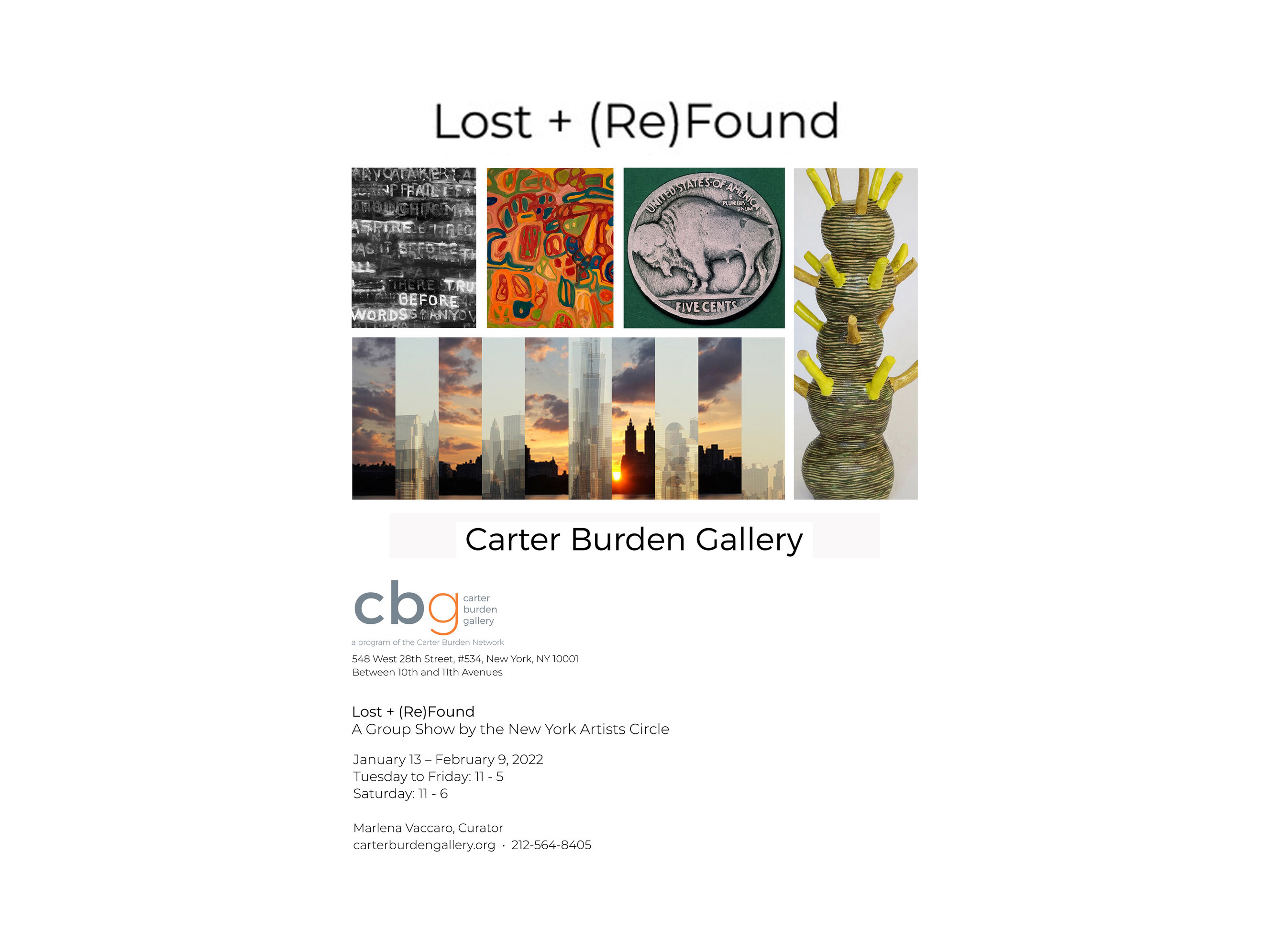Click here to see the opening on YouTube.
The New York Artists Circle presents
The Online Fall Exhibition
De.code
Sep 12 to Nov 30, 202332 artworks promoting a reflection on the concept of code and its meanings.
Curated by Monique Allain, Ana Luiza Addor and Pauline Galiana.
Participating artists
Barbara Slitkin, Charles Seplowin, Cheryl Aden, Ellen Weider, Izzy Nova, January Yoon Cho, JoAnne Lobotsky, Karen Starrett, Karin Bruckner, Kit Callahan, Kristin Reed, Linda Stillman, Lucy Wilner, Sandra Cavanagh, Sandra Taggart, Sarah Hauser, Stacy Bogdonoff, Tatana Kellner, Victoria Genberg and Victoria Pacimeo.
About the curators
Monique Allain: Monique Allain (1958) is an artist, educator and researcher, born in São Paulo to French/Mexican parents. She moved to NY in 2018 and settled in North Salem NY in 2020. Before engaging in the art field, she was an environmental consultant for the “Terra Capital Fund”, the first fund in the world to capitalize on business projects aimed at preserving biodiversity. Sharing the desire to accentuate the participation of visual artists in the processes of cultural decisions and expansion of the recognition and diffusion of visual art developed in Brazil, along with a group of artists, she created the Cooperativa de Artistas Visuais do Brasil (2003-2006). Invited by ABER (Associação Brasileira de Encadernação e Restauro) to create and coordinate the art division NÚCLEO DE ARTE, in 2013 she developed multiple programs which promoted the study and production of artist's books, as a study group for artists, an Artist Book course, and the Vitrine Project. Monique curated several exhibitions in São Paulo and in Paris before she moved to the US.
Ana Luiza Addor: Ana Luiza Addor is an architect, exhibition, and interior designer, born in São Paulo, Brazil but currently based in New York, NY. She received her Bachelor of Arts in Architecture and Urbanism from the University of Sao Paulo, Brazil and as an architect, Ana’s work explores the intersections between spatial planning practices and the creative arts. Her work reflects a particular interest in how these disciplines can be aligned to foster informative and educational debates to activate change within our broader society. In Brazil, she worked with interdisciplinary offices in Sao Paulo where she coordinated the design of a diverse range of projects ranging from large scale exhibitions to small scale residential projects. In 2012, she founded Estudio Cidade, an architecture and exhibition design firm where she practiced from 2012 to 2016. She moved to Cambridge, MA, USA to pursue a Master Degree in Design Studies with a focus on Art, Design and Public Domain at Harvard Graduate School of Design. Since her graduation, Ana has been working as Senior designer at Fogarty Finger, a NY well-recognized interior architecture firm where she manages commercial and hospitality projects and leads a team of talented young designer. At same time, she continues to collaborate in exhibition and art projects around the world to nurture her passion for art while continue expanding her experience as exhibition designer and curator.
Pauline Galiana: Pauline Galiana works simultaneously on distinct bodies of work, from collages to paintings and drawings, from ephemeral installations to small-scale sculptures, from performances to videos. The work often addresses the broad theme of deconstruction versus reconstruction and of hybridization. It combines noble and mundane materials; it expresses instinctive states of mind with formal compositions, using obsessive and meditative processes, meticulous planning, and patient execution, sometimes with rigorous grids. Common motions of drawing, looping, sticking or sewing become, when applied across materials of such varied form, resilience, texture, and “high” and “low” associations, transformative.
De.code Team: Ana Luiza Addor, Monique Allain and Pauline Galiana
Coordination: Monique Allain
Curators: Ana Luiza Addor, Monique Allain and Pauline Galiana
Banner Design: Pauline Galiana
Press: Monique Allain, Ana Luiza Addor and Pauline Galiana
Director of the NYAC Curatorial Program: Lois Bender
PRESS RELEASE
“Man is an ‘alienated’ animal, who must create symbols and order them in codes if he wants to bridge the gap between himself and the ‘world’. He must attempt to ‘mediate’. He must attempt to give the “world” meaning…
… Wherever one discovers codes, one can infer human presence.”
Vilém Flusser
The term Code encompasses several meanings. Through sets of coded signs, information can be easily stored, protected and transmitted. Codes are systems developed by humans for communication and preservation of cultural memory and identity. As philosopher Vilém Flusser pointed out, codes are essential for bridging the gap between ourselves and the world, in order to give meaning to our experiences. De.Code exhibition presents various “bridges” that aim to de.codify different artistic languages by exposing personal artists experiences and revealing their artistic identities and perceptions of the topic.
In 1973, during a conference in Paris, Flusser foresaw the transformations that the digital era would bring. He classified two types of media for human-world connections: linear (text) and surface-based (image). In the early civilization’s stages, the image was the primary means of communication, conveying meaning through spatial associations and multiple interpretations. Since the passage from prehistory to history, writing became increasingly prevalent as a means to communicate ideas. The written line relates symbols to their meanings, establishing a process of conveying information and promoting historical consciousness.
The arrival of digital media with its convenient electronic devices in our everyday life, led to a resurgence of the image. The digital image results itself from a coded system and it is a product of history fed by text. Flusser's vision entailed the fusion of "thought-in-surface" with "thought-in-line," merging image and text, to promote a breakthrough towards a new mental structure. Flusser believed the merging of these two communication systems could re-establish the balance and harmony between human and nature. Forty years later, as we navigate through the XXI century, Flusser's insights remain more relevant than ever. This balance is an ongoing challenge, and the fusion of image and text continues to shape our understanding of reality and the ways we communicate and connect with each other.
Codified forms of communication shape perception and thinking. Throughout history, artists have used and invented various systems of signs to communicate, challenge, and provoke. Codes in art have been used to convey political messages, challenge established norms, express personal experiences, and engage with emerging technologies. Artists have embraced their usage in a variety of ways, often utilizing text or other types of signs to communicate beyond a semantic approach. Some examples include subversion of existing codes, graphic characters, invention of new codes, diagrams, maps, asemic writing which was coined by visual poets Tim Gaze and Jim Leftwich in 1997 to name their ideogrammatic writing devoid of specific semantic content, electronic tools and generative art, as well as various combinations of these strategies.
In the De.code exhibition, artists explore the multifaceted nature of codes using several media and strategies to convey concepts and meanings. This exhibition brings together a diverse array of artworks that ingeniously utilize codes to subvert conventional norms and establish different languages of expression. Through mediums such as painting, drawing, photography, mixed media, print, collage, sculpture, and sewing, these artists imbue images, characters, and symbols with fresh though-provoking significance.
Paul Klee's insightful quote, "Art does not reproduce the visible: rather, it makes visible," resonates with the essence of the De.code exhibition. All the artworks presented in this exhibition unveils hidden aspects of reality, presenting a fresh perspective on the visible world. Through the artistic practice, the participating artists invite viewers to embark on a journey of newfound visibility, where imagination, meaning, and poetry intertwine.
… “mathematical equations …. universe”, “addresses… code… order our lives”, “empty speech bubbles… meaning vanquished by random bits of code”, “SOS… feelings at this time”, “codification of self… official document”, “fingerprint… new surrounding… new environment… new identity”, “rhythm of the heartbeat… sound of the waves”, “words plus images can't be beat!”, “one event supersedes another… blend together… fragmented narrative”, “things… should make sense no longer do”, “X-x… unknown range of information”, “I wouldn't be caught dead in pink and red”, “cosmic code”, “symbol… capricious nature of fate”, “seeking… inner codes”, “common names”, “note to self”, “mysterious language of birds”…
Extracts from artists statements.
Welcome to the De.code exhibition!
De.code Team









